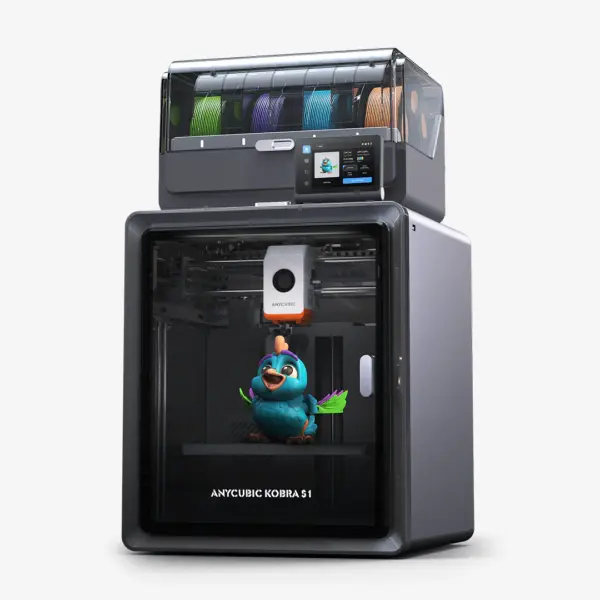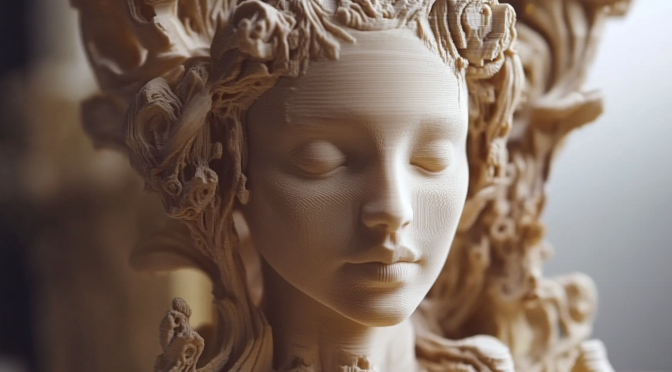As 3D printing continues to weave its way into our lives—from prototyping and manufacturing to hobbyist creations—there’s a unique phenomenon that many of us in the maker community have either experienced or pondered: the act of watching a 3D print come to life. Whether you’re the creator of the object or a casual observer, the sight of a nozzle meticulously layering molten plastic can evoke a surprising array of emotions.
But the question remains: is it truly satisfying to watch a 3D print? And does the experience differ for the person who designed the print versus a general viewer? Let’s explore this fascinating intersection of technology, creativity, and psychology.
The Anycubic Kobra S1 Combo offers an internal camera for both viewing live print job via the mobile app or slicing software along with a time-lapse function (which you can see above featuring the construction of a ‘poop-bin’).

The Creator’s Perspective
For those of us who have spent hours—sometimes days—designing a model, watching it come to life can feel akin to witnessing a sculptor carving marble. The experience is deeply personal, tied to the creative process and the anticipation of seeing your vision materialise.
There’s also a practical aspect: watching a print unfold can provide critical insight into potential design flaws. The layers reveal everything, from the perfect flow of filament to those dreaded moments when a miscalculation results in spaghetti-like chaos. For the creator, this isn’t just satisfying—it’s a vital part of refining their craft.
But let’s be honest: once the novelty wears off, even the most enthusiastic maker might find the process a tad monotonous. After all, watching a large print can take hours, if not days. Remote monitoring via a video link often becomes a preferred alternative—practical, yes, but does it carry the same visceral satisfaction?
The Viewer’s Perspective
For the uninitiated, the spectacle of a 3D printer at work can be downright mesmerising. There’s something hypnotic about the rhythmic movements of the print head, the hum of the stepper motors, and the slow but steady transformation of raw filament into a tangible object.
Platforms like YouTube and TikTok are filled with time-lapse videos of prints, condensed into seconds or minutes. These videos are undeniably satisfying, combining the visual appeal of precision engineering with the gratification of seeing a project completed in record time. But is the live experience equally captivating?
Casual viewers often find the real-time process relaxing but not necessarily engaging for extended periods. Much like watching a pot boil, the anticipation can sometimes outpace the actual event. Still, there’s a niche group of enthusiasts who liken the experience to watching a campfire—soothing, meditative, and strangely addictive.
The Role of Remote Monitoring
Remote monitoring adds an interesting layer to the debate. For creators, tools like OctoPrint or a webcam setup allow for constant oversight without being tethered to the printer. This practical solution can also serve as a bridge between creators and viewers, enabling live streams of prints for a global audience.
Most modern printers now come equipped with built-in cameras and the ability to create time-lapse videos. Open-source tools like OctoPrint have even enhanced this experience by homing the print head during time-lapse capture, resulting in cleaner and more engaging footage. These advancements not only make monitoring more practical but also elevate the viewing experience for creators and audiences alike.
However, the satisfaction derived from remote monitoring often depends on the context. Is it a high-stakes print with intricate details? Or a simple functional piece? For viewers tuning in remotely, the experience can feel less immersive but still enjoyable, especially when paired with commentary or a clear narrative about the object’s purpose.
The Verdict
So, is watching a 3D print satisfying? The answer, unsurprisingly, is subjective. For creators, the process can be a blend of satisfaction, anticipation, and anxiety. For viewers, it’s often a mix of curiosity and relaxation, with the level of engagement varying based on personal interest.
Perhaps the real magic lies in the shared appreciation for the technology. Whether you’re a maker checking for flaws, a viewer marvelling at the process, or someone enjoying a time-lapse on social media, 3D printing offers a unique window into the intersection of art and engineering.
So, next time you find yourself mesmerised by a print—either in person or remotely—take a moment to reflect on what it is that holds your attention. Is it the satisfaction of creation, the joy of discovery, or simply the hypnotic beauty of precision in motion? Whatever your answer, one thing’s for sure: 3D printing continues to capture our imagination, one layer at a time.


